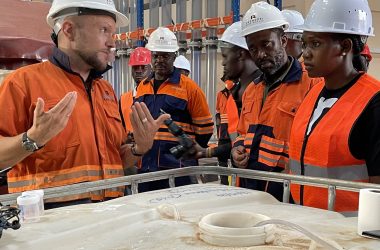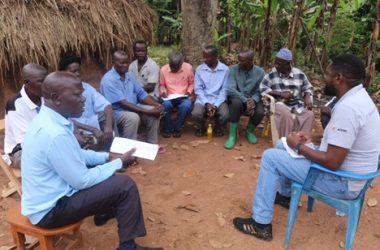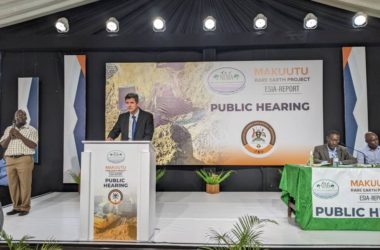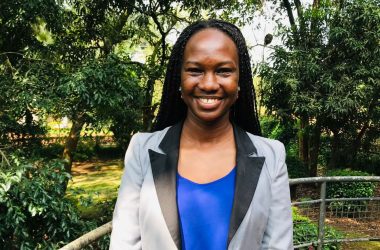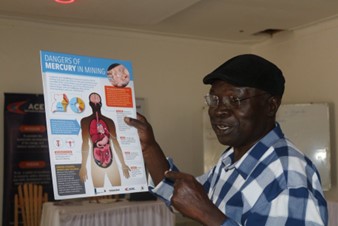Artisanal and Small-scale Mining in Uganda is a complex network of diversification and interests. It ranges from informal individual operators, an artisanal family or entire community surviving on artisanal and small scale mining for a livelihood in their backyard, land or surrounding communities.
Government of Uganda recognises that Artisanal and Small Scale Mining (ASM) is a large employer that benefits low-income earners and vulnerable groups in mineral producing districts. It is estimated that over 3 million people could be directly benefiting from artisanal and illegal mining activities. It is therefore part of Government’s broader strategy of ensuring that mining as a whole becomes one of the key economic drivers of the Ugandan economy as envisaged by the country’s Vision 2040 and National Development Plan III.
The Biometric Registration and Management of ASM in Uganda Project (BRASM) is an outcome of the Mining and Minerals Policy, 2018 and the Mining Act, 2003. In May 2018, the Ugandan Cabinet endorsed a new Mining and Minerals Policy framework, which focuses on the formalisation and regulation of the ASM sector. BRASM is the first step towards the formalisation of ASM in Uganda. This process will be augmented by other processes and initiatives laid out in the Mining and Minerals Policy, 2018 and as proposed in the Mining and Minerals Bill, 2021.
BRASM is a result of the country’s drive to enhance the quality of life of ASMs so as to increase their contribution to Uganda’s sustainable development. It will ensure that ASM is a preserve for Ugandans by eliminating illegal non-citizens from ASM operations while building lasting relations with foreign formal miners seeking to build long-term business relations with mineral rich communities and ASMs.
Ultimately, BRASM is a precursor to the integration of ASM activities and operations into the broader mining legal framework as well as integration of informal ASM activities into the formal fiscal and economic system. It is designed to reduce or eliminate the social and environmental negative impacts and externalities of ASM operations, streamline ASM operations alongside medium to large scale mining operations and concessions and capture lost economic value of the sector for the sustainable development of the Ugandan economy.
The management and governance of the ASM sector requires Government to carry out a census of the ASM players. The BRASM is Government’s intervention to sanitise the ASM sector by addressing its current challenges. Government seeks to promote co-existence between ASM operations alongside medium to large scale mining operations, strengthening relationships between landowners and miners while at the same time increasing revenue collection from the ASM sub-sector by supporting production through the skilling of miners, providing capital financing and technology.
Government will encourage sustainable mining by ASMs and will promote environmentally sound mining practices and ensure that use of hazardous chemicals such as mercury and cyanide in mineral extraction is eradicated.
Government will therefore undertake biometric registration of all ASMs, service providers, dealers and agents, issue them with renewable certificates and or permits, create a database with all the bio-data of all miners including Government seeks to promote coexistence between ASM operations alongside medium to large scale mining operations, strengthening relationships between landowners and miners while at the same time increasing revenue collection from the ASM sub-sector 6 names, sex, age, location, affiliations to registered ASM associations and National I.D Numbers (NINS) to establish numbers and categories of people involved in ASMs operations. This will not only help shape and create an organised ASM sub-sector but it will also enable the government to effectively monitor the sub-sector and its compliance with domestic laws and international standards and ensure compliance by the miners.
The ASMs database that is linked to the National Data Base of NIRA will ensure that holders of ASM mining licenses or permits are recognised Ugandan citizens. This exercise will enable the sector players to understand the extent of foreign infiltration into mining sites of ASMs and detect any emerging criminal gangs and or terrorists who are deemed to be a security threat not only to the mining communities, but the country as a whole.
The BRASM project also seeks to encourage the ASM sector participation in supply chain initiatives as a means to improve the sector’s contribution to economic, environmental protection and peace within the International Conference of Great Lakes Region (ICGLRL). This objective is re-emphasised by Government’s domestication of the ICGLR Act and the commitment to implementation of the Regional Certification Mechanism which in essence eliminates barriers to participation in the supply chains of the 3TGs (Tin, Tantalum, Tungsten and Gold).
Finally, the registration of miners coupled with further studies will enable government to explore ways to identify alternative livelihoods such as programmes aiming at encouraging more income generating activities to diversify on artisanal household incomes along the ASM supply chain; understand challenges, impacts and develop appropriate mechanism for management and improvement of ASM practices in the country; as well as generate more revenues from the sector.


